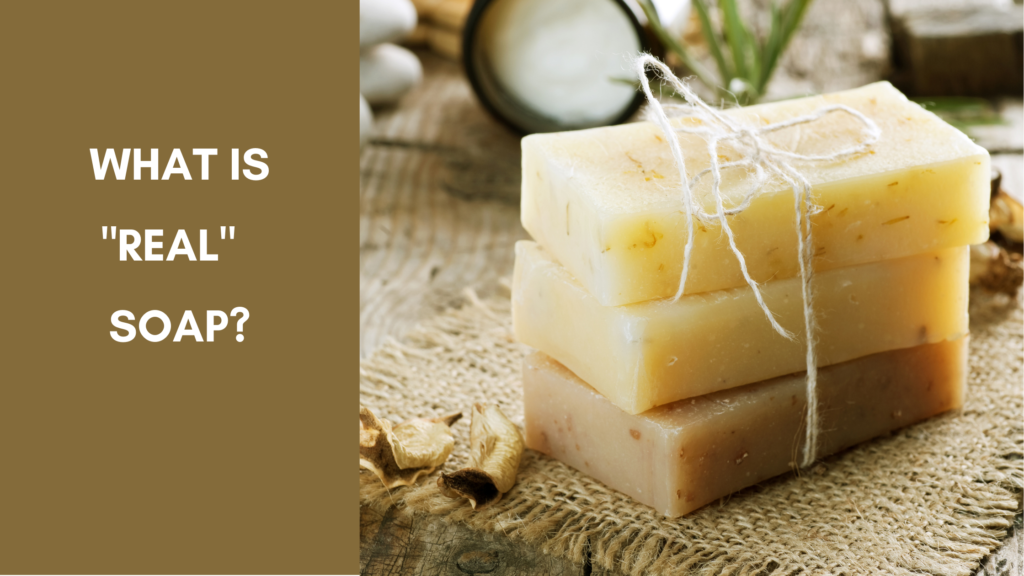Basics, Soap Making
Everything you need to know about natural soap!
by Sheetal Kabra
We at Earthy Sapo, make soaps the traditional way. What exactly does the term traditional soap making mean? Soap, by definition, is the result of a chemical reaction between an acid (fats & oils of plant or animal origin) & an alkali (lye or sodium hydroxide or potassium hydroxide). This chemical reaction converts fats & lye into soap (chemically also known as salt) & glycerine and is known as saponification. The salt cleanses and the glycerine moisturizes. This is how traditionally soaps were made – reacting fats with lye. Other ingredients like herbs, juices, fragrances etc are used in soaps to enhance the bathing experience & soap characteristics, & are optional. Thus, traditionally no artificial or “special” ingredient was added for lather or cleansing or hardening.
We at Earthy Sapo, make the soap just like the way our grandmas traditionally made. Additionally, this entire process is handmade by us. Hence, we handcraft real soaps!
A. MELT & POUR (M&P) SOAP BASE
Now, if you would have purchased “handmade soaps” online or in stores, you would have perhaps come across transparent/translucent soaps commonly also called as “glycerine soaps” that are brightly coloured & attractive looking. These soaps are made from melt & pour (MP) soap base & are also being quoted as handmade soaps or natural soaps. Nowadays MP soap bases are also available in opaque bases. Earthy Sapo makes soap the traditional way & does not use transparent or MP soap bases.
So what is the difference between traditionally made soaps and MP soaps? Why do we at Earthy Sapo have reservations about MP soaps?
Honestly, my first exposure to handmade soap making was with MP soap base only. MP soaps are pre-made soaps base that are ready to use. Making handmade MP soaps involves melting the MP base, adding colour, fragrance/essential oils, herbs etc & pouring into moulds. Once fully cooled & hardened, the soap is ready to use. On the other hand, soaps made traditionally are made from scratch & require curing time to be ready for use. We at Earthy Sapo think that traditionally made natural soaps are a superior choice to MP soaps. Why? Here is a list below:
MP soap bases are less natural
a true soap is not transparent, nor is it easy to melt. To make the MP soap base transparent or translucent & easy to melt, several other ingredients like alcohol, solvents, stearic acid are added (which can make soaps drying on the skin). Some MP bases also incorporate SLS/SLES/ other synthetic detergents too, side effects of which are quite well known. On the other hand, a real & natural soap is made without these harmful ingredients & thus are mild & safe.
The myth of glycerine soaps
glycerine is a by-product of soap making & all soaps that are made the traditional way have them incorporated, making them milder soaps. Thus, in traditional soaps, glycerine is not added as an ingredient. On the other hand, the addition of solvents & synthetic ingredients & lack of super-fatting the soap base, makes MP soap base them more drying. To combat this, & to give the soap transparent/translucent appearance, glycerine is added as an ingredient in MP soap bases. Hence, calling transparent soaps as glycerine soap is not just a myth but a marketing gimmick.
There is no formulation involved on soapmaker’s part
all soaps made from a given MP base offer the same properties & are thus almost the same except for the fragrance or colour making it difficult to suit or meet various skin needs. On the other hand, traditionally made soaps, offer the soap maker the freedom to formulate the soaps (in terms of choice of oils, super fatting etc) keeping various skin needs in mind.
Unlikely to be suitable for sensitive skin
MP soaps are unlikely to suit sensitive skin as they incorporate several chemicals ingredients. Further, as the MP soaps do not carry the detailed ingredient list of the MP base, people with sensitive skin or specific allergies, cannot make an informed purchase of these soaps. However, not only are traditionally made soaps milder, they can provide a detailed list of ingredients used to help make an informed choice.
Other reasons
In MP soaps, we have no control over the quality of the soap as it is completely dependent on the quality of the MP base. Also, as the formulation of the MP base is not unique to the soapmaker, it lacks distinctiveness & becomes a “me too” product.
B. SOAP NOODLES
What are soap noodles?
Soap Noodles (SN) are made from vegetable oils, such as palm oil, coconut oil or olive oil, and/or animal fats (tallow). These are ‘saponified’, usually using lye, to form a salt of the fatty acids. SN constitute the very basic form of soap. Manufacturers are able to buy basic SN, then add pigments, fragrances and other components to create their own brand of soap. Once this has been accomplished, the soap is moulded and pressed into its final shape, stamped with the brand and packaged. Different specifications of SN are used depending on the type of soap to be manufactured e.g. toilet soap, laundry soap, translucent soaps, high-lather, medicated, etc
Difference between MP base & SN
Both MP soap base & SN are readymade soap bases used for making final soaps for retail use. In both cases, the soap bar manufacturer is not saponifying the fat (reacting the fats with sodium hydroxide) but is using a readymade saponified fat (soap). However, MP soap bases are easily meltable, while SN usually are not. Making soaps with MP base does not require any large manufacturing set up or heavy machinery & can also be done at home. Making soaps with SN, on the other hand, requires a manufacturing setup or specific machinery. Thus, you can make “handmade” soaps with MP soap base but not with SN. MP soap bases are mostly used for making toilet or bathing soaps, while SN can be used for making various types of soaps including laundry or medicated soaps.
Ideally & technically, there shouldn’t be an issue in using SN to make a final soap as SN are nothing but some saponified fats or the most basic form of soap. Yet..
Yet, the following are my discomfort factors:
- We all know that glycerine is a by-product of soap making or saponification. The SN manufacturers, by and large, separate out the glycerine from soap and sell the glycerine separately, which provides them with an additional source of revenue. The SN are thus sans glycerine, which makes them hard, which is an advantage for commercial soap manufacturers, as the soaps last longer in shower. This, perhaps also explains why soaps made with SN hardly attract moisture or become soft in humid environments unlike the traditionally made soaps.
- It is possible that the SN manufacturers add preservatives or pigments in the SN. In such case, the final ingredient listings on the soaps made with SN can be very deceiving as soap manufacturers that use SN, only have to disclose the ingredients that they add to create their soap bar, they do not have to fully disclose the ingredients in the SN.
- While SN of various fats are available, SN mostly are made with coconut oil, palm oil, palm kernel oil & animal fat due to cost advantage, high lather & soap hardness properties that these fats offer. However, the downside of the soaps made with just these fats is that they tend to be drying & are not very suitable for dry or sensitive skin. To counter this, the soap manufacturer lands up adding a lot of other ingredients like chemical based conditioners/moisturizers, preservatives etc.
To understand the above issues better, lets us look at the following popular natural or ayurvedic soaps being sold in India:
Patanjali Saundarya Soap
Base ingredients state SN made from palm & palm kernel oil, vitamin E, Decyl Glucoside (plant-derived surfactant for sensitive skin), perfume.
My take
Soaps made with palm & palm kernel oil tend to be very dry. To counteract the drying qualities of the base SN, other moisturizers have been added. Chandan or sandalwood oil is super expensive, so looking at the price its fragrance has been added. The fragrance is extremely strong & gave me an instant headache! The soap is drying apart from containing strong scent, making it unsuitable for dry or sensitive skin.
2. Himalaya Honey & Milk Soap
Ingredients state SN made from palm & palm kernel oil, fragrance, glycerine, honey, milk, flavour (I don’t know what this is for!). Tetrasodium EDTA (preservative & water softener– potentially cancer-causing/ ingredients of the preservative are known to be penetration enhancer), Tetradibutyl Pentaerithrityl Hydroxyhydrocinnamate (antioxidant)
My take
Like in the previous case, to counteract the drying qualities of the base SN, other moisturizers have been added. To stabilize the moisturizers (milk/honey etc) preservatives are necessary. The soap is not very drying. Yet, I would stay away from this soap because of the preservatives, as I feel we do not need to take any risk.
3. Baby Biotique Bio Almond Nourishing Soap
Ingredients state Coconut oil & Castor oil – 31.5%, Sugar-6%, Neem/Haldi/Almond oil – 0.27%, water.
My take
- The ingredient list seems incomplete to me. Details of about 62% of the ingredients haven’t been provided. I am unable to understand if remaining 62% is SN (& that too of which oils?). if 32% of oil is added to 62% soap base, the soap is unlikely to be this hard; Or,
- Whether it means that the soap base is made of 62% SN of plant origin like palm/palm kernel (it has a vegetarian symbol on it) & 32% coconut & castor SN or
- I understand if the formulation is proprietary and the exact % of each ingredient cannot be provided. But it is imperative to mention the ingredient with Q.S (quantity sufficient) marking.
- 62% comprises of other ingredients which basically could be anything!
The fragrance is reasonably strong, though not as strong as Patanjali’s soap. The soap is reasonably moisturizing. The soap states that it is preservative-free & organically pure and for this it is very economically priced (Rs. 55 for 75 g)! To get a better understanding of the ingredients of the soap, I did another experiment – I placed the Biotique soap & my hardest soap bar i.e. laundry soap each in a bowl of water overnight. Biotique soap hardly dissolved, while my laundry bar dissolved to almost half. This makes me feel that some artificial hardening agents like stearic acid etc have been added into Biotique soap or the soap is largely made with soap noodles like the previous two soaps.
Final Results
MP soaps are very attractive & easy on the pockets too (at least in India). But remember, they might be better than the commercial chemical-based soaps but certainly not natural & safer than traditionally made soaps. The story behind Earthy Sapo was to eliminate all the unnecessary chemicals from our lives. We made an informed choice to stay away from making soaps with MP base.
Over to you now. Let me know whether you agree with my view on the superiority of traditionally made soaps over soaps made using readymade bases. Also, I urge you all to look at the ingredients of the soaps before using soaps which claims to be natural soaps. Make an informed decision, ignorance is not always bliss!
As always, your comments are welcome!
Note: The content is given by Founder of Earthy-Sapo, Sheetal Kabra

